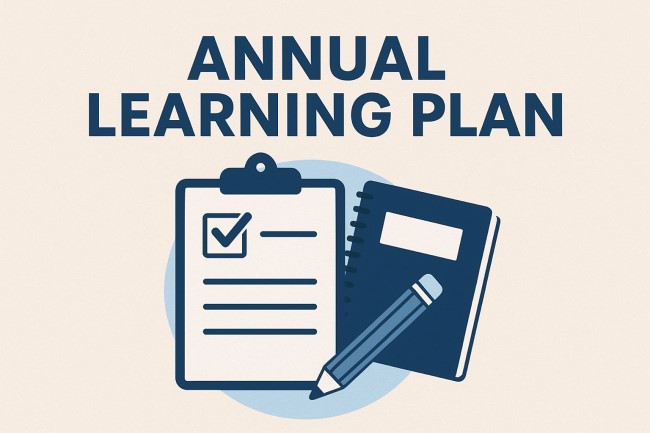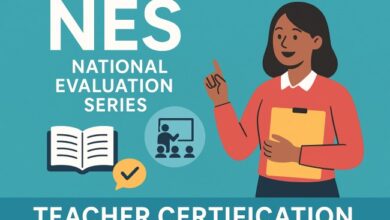Annual Learning Plan: A Complete Guide to Effective Professional Growth

Introduction to the Annual Learning Plan
An Annual Learning Plan (ALP) is more than just a document—it’s a roadmap for personal and professional growth. Designed to set clear goals, outline actionable steps, and monitor progress over a full year, the ALP is a valuable tool for individuals and organizations aiming for consistent development.
While ALPs are widely used in education, particularly for teachers, they can also be applied in corporate settings, training programs, and personal development strategies. By structuring your learning objectives and aligning them with long-term goals, the ALP ensures your growth is purposeful, measurable, and sustainable.
Importance of an Annual Learning Plan
Clarity and Focus
The ALP provides a clear direction for the year ahead. It ensures that learning activities are not random but strategically linked to professional requirements and personal ambitions.
Accountability
A written plan acts as a commitment. Once documented, your goals and timelines become easier to track and evaluate.
Continuous Improvement
Instead of sporadic training, the ALP promotes ongoing development, allowing individuals to refine skills and knowledge regularly.
Alignment with Organizational Goals
For professionals, an ALP ensures that individual development is in sync with the organization’s vision, mission, and performance standards.
Key Components of an Annual Learning Plan
An effective ALP usually contains several core elements:
1. Professional Growth Goals
Clearly define what you want to achieve. Goals should be specific, measurable, achievable, relevant, and time-bound (SMART). For example:
-
Enhance subject knowledge in mathematics by attending two workshops.
-
Improve classroom technology integration skills before the end of the school year.
2. Strategies and Rationale
Outline how you plan to reach each goal and why it matters. Strategies might include attending training sessions, joining professional networks, reading relevant publications, or engaging in peer collaboration.
3. Action Plan and Timelines
Break down each goal into concrete actions with deadlines. For instance:
-
January to March – Complete online training.
-
April to May – Apply new skills in the classroom.
-
June – Evaluate effectiveness and make adjustments.
4. Review and Consultation
Although the plan is self-directed, periodic discussions with a supervisor, mentor, or principal ensure progress is on track. Constructive feedback can refine your approach and enhance results.
5. Reflection and Update
An ALP is a living document. It should be reviewed and updated as circumstances change or new opportunities arise.
Steps to Create an Effective Annual Learning Plan
Step 1: Assess Current Skills and Needs
Before setting goals, evaluate your current abilities and identify areas for improvement. This assessment can be done through self-reflection, performance reviews, or peer feedback.
Step 2: Set SMART Goals
Ensure your goals are realistic and directly linked to your professional responsibilities or personal ambitions.
Step 3: Choose Learning Strategies
Select methods that best suit your learning style—workshops, webinars, mentorship, or self-paced online courses.
Step 4: Establish a Timeline
Assign deadlines to each task. Timelines encourage steady progress and prevent procrastination.
Step 5: Implement the Plan
Put your strategies into action, making sure to stay committed and motivated.
Step 6: Monitor and Adjust
Regularly track your progress and make changes if needed. If a certain strategy isn’t producing results, replace it with a more effective one.
Example of an Annual Learning Plan Structure
Goal: Improve knowledge of digital teaching tools.
Strategy: Attend three professional development sessions and join an online educator community.
Timeline: Complete training by September; integrate tools into lessons by November.
Rationale: To enhance student engagement and adapt to modern learning environments.
Review Date: December – assess student feedback and adjust approach.
Benefits of Following an Annual Learning Plan
For Individuals
-
Skill Enhancement: Gain new competencies that improve work performance.
-
Career Growth: Strengthen your resume and position yourself for promotions.
-
Confidence Boost: Mastery of new skills increases self-assurance.
For Organizations
-
Higher Productivity: Skilled employees work more efficiently.
-
Better Retention: Employees who see growth opportunities are more likely to stay.
-
Consistency: Ensures all team members are working toward aligned goals.
Common Challenges and How to Overcome Them
Lack of Time
Solution: Break learning activities into small, manageable chunks and schedule them in advance.
Limited Resources
Solution: Utilize free or low-cost online training platforms and collaborate with peers to share knowledge.
Loss of Motivation
Solution: Set short-term milestones and reward yourself for progress.
Tips for Maximizing the Annual Learning Plan’s Effectiveness
-
Keep it realistic but challenging.
-
Review it at least quarterly.
-
Involve mentors or supervisors for feedback.
-
Document your achievements for future reference.
-
Stay adaptable—update the plan when circumstances change.
Final Thoughts
An Annual Learning Plan is a powerful framework for structured and meaningful growth. By setting clear objectives, choosing the right strategies, and regularly reviewing progress, you can turn ambitions into achievable outcomes. Whether you are a teacher striving to improve classroom practices or a professional seeking career advancement, a well-crafted ALP keeps you on track, motivated, and ready for success throughout the year.



